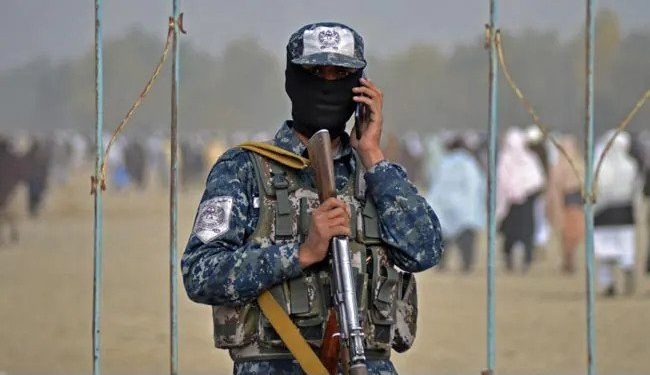It is a chilling thought for any country to raise a contingent of suicide bombers as part of its regular armed forces. This is for the simple reason that suicide bombing cannot be a legitimate form of any defence system. It has always been a tool in the hands of terrorist groups to resort to for subversive activities. But history also tells us about the Kamikaze pilots of Japan who emerged towards the end of World War II. One may not go into details of this past.
The task of suicide bombers is very clear cut. They set out to die and kill in the most unsuspecting areas. The idea is not only to instill fear but also to grab international headlines. India was a witness to the acts of such self-destructive people multiple times. The Bombay terror attack is one such event that will not be easily forgotten. All those involved in the Bombay attack or the 9/11 attacks in the US never had a return ticket. They came with the sole purpose of dying in the name of Allah. Globally, and also in countries like Afghanistan, Iraq and Syria, suicide bomber attacks have very rarely failed.
The first ever squad of suicide bombers comes into being as a regular and legitimate army unit in the Taliban-ruled Afghanistan – a country that has been the hotbed of terrorist activities for two decades. Their main target now would be the local offshoot of the Islamic State, which has carried out at least five major attacks as the Taliban looked to consolidate power after the US withdrew from Afghanistan in August last year. Several of those attacks were carried out by suicide bombers. The special forces that include martyrdom seekers will be used for more sophisticated and special operations, said Taliban’s deputy spokesman Bilal Karimi. The militant group is ostensibly building a strong and organised army to bolster defence nationwide and at the borders with the suicide bombers becoming an integral part of the strategy. Some 150,000 fighters will be invited to join the military. The recruitment drive comes after the Taliban purged the military ranks to stop those who were conducting house-to-house searches to settle scores with opponents.
The news comes as a shock to the international community as the Taliban have for the past few months been posing to transform themselves from an insurgency group into a government. The rest of the world has great reservations and doubts about the real intent of the Taliban who are viewed with suspicion and distrust for their history of terror and bloodshed. Their emergence as rulers of Afghanistan is yet to get international recognition and their actions are being closely watched. Sanctions are still being applied against them and Afghanistan’s financial resources worth billions of dollars continue to be frozen by the US and other countries. The Taliban are desperately trying to earn legitimacy by promising they would honour democratic values and ‘respect’ their women population. The urgency is understandable as Afghanistan is facing starvation and a severe winter coupled with funds crunch. When the international community is expecting that the Taliban would be more accommodating to other ethnic groups in the country and form an inclusive government, the decision to form a suicide bombers’ squad only accentuates fears. That this band of youth would certainly have become a pretty big thorn on the side of the Taliban government is becoming evident. They would have emerged as the most severe headache for the present Establishment. Built on the belief that death would put them straight at the feet of Allah, this group would have turned restless as well as violent. Earlier, they had a clear cut enemy with a particular attire. There was no requirement of using their brains to reason out where extreme violence was required. These religious bigots would now have become a problem for the Taliban administration. The suicide squad could be a way to contain and discipline these jihadists.
The explanation offered by the Taliban that suicide bombers will be used to checkmate terrorist outfits, especially the Afghan offshoot of Islamic State, sounds hollow. Yet, there were tell tale signs that the Taliban would not abandon the path of terror. Soon after they seized control of Kabul in mid-August last year, the Taliban paraded their Istish-haadi (‘seeking martyrdom’) or suicide bomber squadron on national television. They disturbingly exhibited an arsenal of suicide vests, suicide car bombs, and yellow plastic jerry cans that were used to make improvised explosive devices (IEDs). Worse still was the spectacle of a ballad glorifying the bombs and associated bombers being played over the visuals.
On yet another occasion, the Taliban commemorated suicide bombers at an event at the Intercontinental Hotel in Kabul. This time, the regime’s interior minister, Sirajuddin Haqqani, who is head of the notorious Haqqani Network, delivered an address directed at hundreds of men representing the family members of suicide bombers. Haqqani congratulated the men for their loved ones’ ‘divine’ sacrifice and presented them with gifts of clothes, cash, and the promised allocation of land plots. Last October, the group announced the deployment of 3,000 suicide bombers along the borders of Afghanistan and Tajikistan during heightened tensions with the latter.
What is disconcerting is that Haqqani sent his message across to relatives of suicide bombers knowing well it was bound to alienate parts of the Afghan population struggling so hard to come to terms with the group’s return.






































